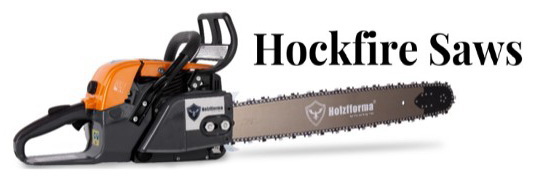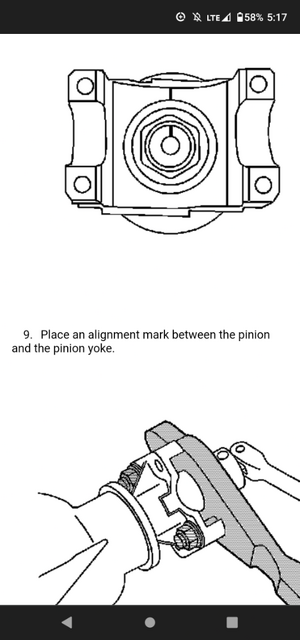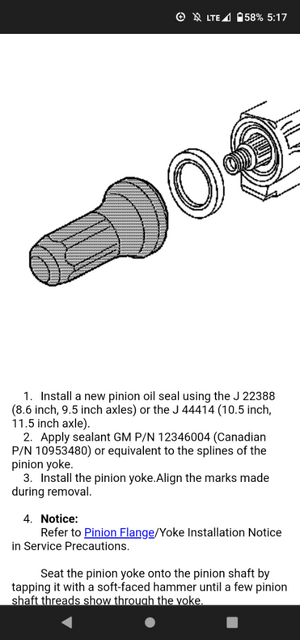why has the seal started leaking, could it be a bearing on its way out has a little play now and lets oil past the seal?
i thought I mentioned the truck has 130k miles, that would likely be the simple reason. I have zero problems with the axle otherwise, very quiet. I don't want that f'd up. There's no indication that there is any kind of "bearing on it's way out" or "any play". I've taken the suggestions seriously, i thought about the responses and then responsed on them and was kinda easy to poke holes in their validity... not to piss u off but to understand what the real deal is that no one wants to put any thought into.
I'm not exactly sure what is going on here .It's a leaky seal but every suggestion is not taken seriously .It's been said getting enough torque using a half inch drive socket won't work .Then how about a 3/4" drive or a torque multiplier ? On that the multiplier I have I think is 64 to 1 ratio .It wasn't that expensive at the time . This will be my last word on this subject .
here @ 14:45+ crushing the crush sleeve
unless you want to refute this video as not realistic, on the demonstration of crushing the crush sleeve and what it takes, I continue to ask...
on an existing crush sleeve that's been set, in service for 130k miles with zero problems, how can I possibly over tighten the pinon nut when reinstalling by hand using a 1/2 wrench? Would the existing crush sleeve not act as a solid spacer when considering regular human strength and a simple half inch wrench going to ~150lb-ft max? Even ~200 lbft. Because I would have to further crush the crush sleeve to cause more pinion bearing preload than what there was before disassembly would I not? That was the initial process when doing the crush sleeve was is not?
The posted video above of sam's trucks and his "it's pretty close I hope it doesn't blow apart".... makes me chuckle still when I think about that.
If the kid was able to tighten the pinion nut... by hand...
actually back to the original location where it was before disassembly then what does that mean? When you know the crush sleeve took some 400 lbft to get it to crush to that original dimension? This is the technical understanding I was looking to hear about if anyone was inclined to talk about... rather than a
this is how it's done gfy you don't need to know anymore than that kind of answer. The kid was probably off a complete rotation of the pinion nut in that video. And there was no mention of measured rotating torque afterwards to verify, just a thumbs up good to go, no reason to think that has any credibility in being correct.
an oemtools tq multipler @ autozone is $700 not a rental, others on amazon < $300 but I don't know if i'd trust them, knowing what I am getting myself into in my driveway once i begin to undo the pinion nut and the question is/was do I need to use a new crush sleeve and
why or can the existing crush sleeve be reused
and why. And to a lesser extent the purpose of the crush sleeve - which is not to "specifically set bearing preload" it's purpose is to (a) serve as a means compression to achieve pinion shaft tension on the pinion nut and (b) more importantly a forceful press against that outer pinion bearing which slid on onto the pinion shaft so it needs to be secured from that bearing inner portion rotating on the pinion shaft which is what everyone fails to comprehend. the bearing preload everyone jumps on as the reason simply happens from how much distance is taken up by tighening down the nut on the pinion shaft and can actually be done without using a crush sleeve or solid spacer..








